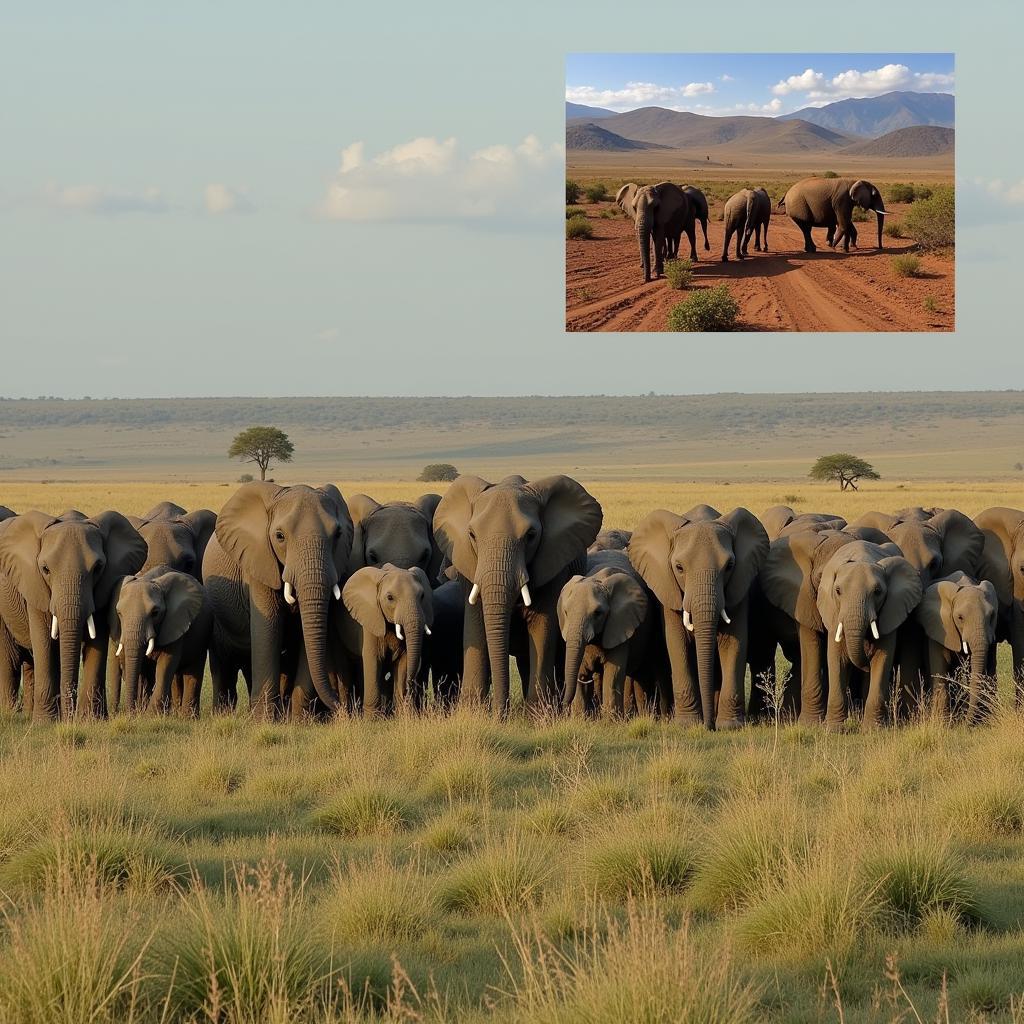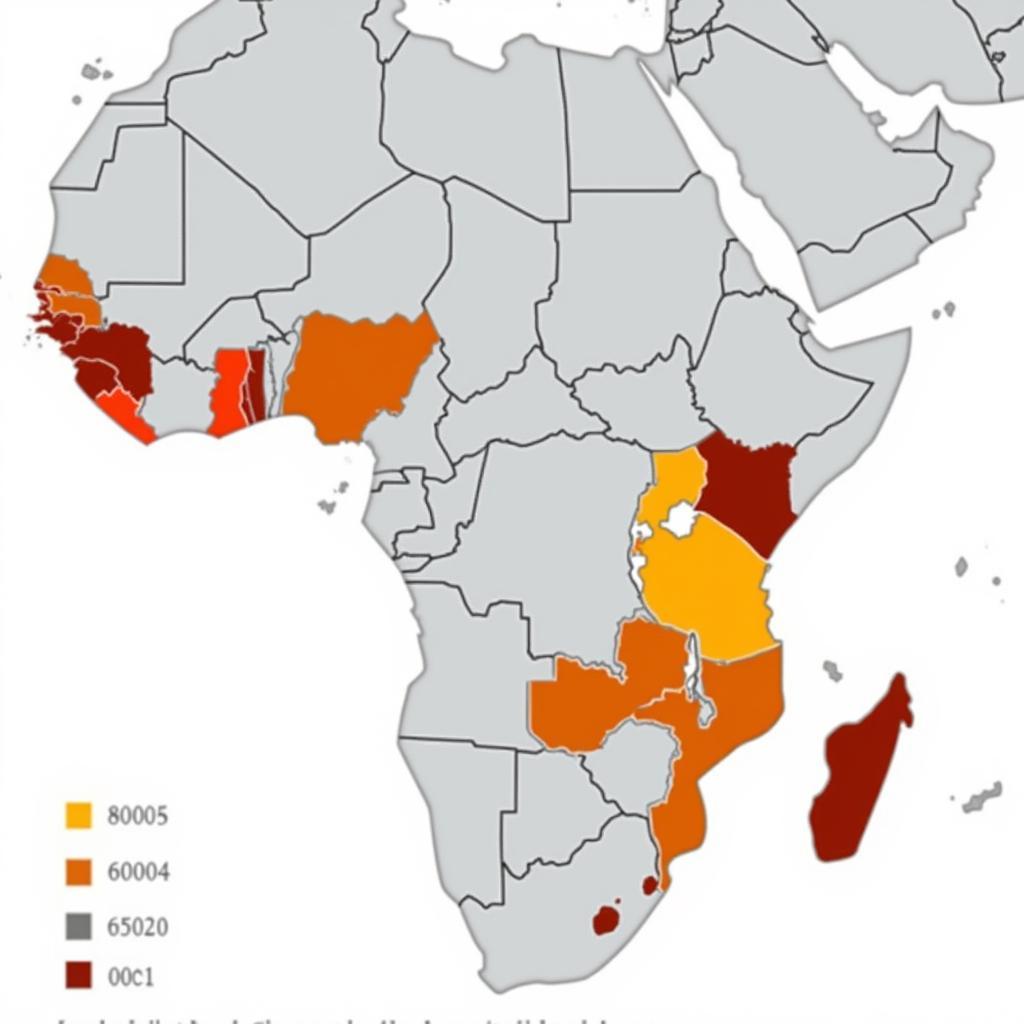African Countries Where Elephant Culling Is Permissible
Elephant culling, a controversial wildlife management practice, is permissible in a few African countries. While often met with international criticism, these countries argue that culling is necessary for managing elephant populations and mitigating human-wildlife conflict. This article explores the complex issue of elephant culling in Africa, examining the countries where it’s allowed, the reasons behind its implementation, and the ethical and ecological debates surrounding the practice.
Understanding the Complexities of Elephant Culling
Elephant culling involves the selective killing of elephants to control their population size. Proponents argue that culling is necessary to prevent habitat destruction, reduce human-wildlife conflict, and generate revenue for conservation efforts. They maintain that overpopulation can lead to severe environmental damage, including deforestation and depletion of resources, impacting other wildlife species. Furthermore, escalating human-elephant encounters, often resulting in crop damage, property loss, and even human fatalities, are cited as another justification for culling.
However, critics argue that culling is a cruel and inhumane practice with detrimental effects on elephant populations and ecosystems. They question the long-term effectiveness of culling as a management tool, pointing to potential disruptions in elephant social structures and the possibility of increased aggression among surviving individuals. Alternative approaches, such as translocation and contraception, are often advocated as more ethical and sustainable solutions.
 Elephant Culling: A Controversial Practice in Africa
Elephant Culling: A Controversial Practice in Africa
African Countries Where Elephant Culling is Practiced
Several southern African countries have, at various times, implemented elephant culling programs. These include:
- Botswana: Botswana has a history of elephant culling, though it has been suspended and reinstated at different times depending on the prevailing political climate and scientific recommendations.
- Namibia: Namibia has also utilized culling as a management strategy, citing human-wildlife conflict and habitat degradation as justifications.
- South Africa: South Africa has permitted culling in specific national parks and reserves to manage elephant populations within their carrying capacities.
- Zimbabwe: Zimbabwe has conducted culling operations, particularly in areas with high elephant densities and significant human-wildlife conflict.
It’s important to note that the legality and frequency of culling can vary significantly within these countries and over time, often depending on changing ecological and political landscapes.
 Elephant Population Management in Southern Africa
Elephant Population Management in Southern Africa
The Ethical and Ecological Debates Surrounding Culling
The practice of elephant culling remains highly controversial, sparking heated debates among conservationists, animal welfare advocates, and local communities. Ethical concerns revolve around the inherent cruelty of killing sentient beings, particularly the potential psychological trauma experienced by surviving elephants. Furthermore, questions are raised about the disruption of family structures and the potential for long-term behavioral changes in affected populations.
Ecologically, the long-term impacts of culling are still being studied. While some argue that culling is necessary to maintain ecological balance, others express concerns about its potential to disrupt natural processes and create unintended consequences for other species.
“Culling is not a silver bullet,” says Dr. Anika Nkosi, a wildlife biologist specializing in elephant conservation in South Africa. “It’s a complex issue with far-reaching consequences that need to be carefully considered. We must prioritize non-lethal management strategies and engage local communities in finding sustainable solutions.”
 Alternatives to Culling: Translocation and Contraception
Alternatives to Culling: Translocation and Contraception
Finding a Sustainable Future for Elephants
The future of elephant conservation in Africa hinges on finding a balance between protecting these magnificent animals and addressing the legitimate concerns of communities living alongside them. Moving forward, a multi-faceted approach that integrates scientific research, community engagement, and non-lethal management techniques is crucial. This includes exploring and implementing alternative strategies such as habitat expansion, wildlife corridors, community-based conservation programs, and innovative approaches to human-wildlife conflict mitigation.
In conclusion, elephant culling in African Countries Where Elephant Culling Is Permissible continues to be a complex and controversial issue. While some countries argue for its necessity in managing elephant populations, the ethical and ecological implications remain a subject of intense debate. Ultimately, the future of elephant conservation relies on finding sustainable solutions that prioritize both the well-being of these iconic animals and the needs of the human communities sharing their environment.
FAQ
- Is elephant culling legal in all African countries? No, elephant culling is only permissible in a few specific countries in southern Africa, and even within those countries, the regulations and practices vary.
- What are the main reasons given for elephant culling? Proponents cite habitat destruction, human-wildlife conflict, and the generation of revenue for conservation efforts as primary justifications.
- What are the ethical concerns surrounding elephant culling? Ethical concerns revolve around the cruelty of killing sentient beings, the potential psychological trauma on surviving elephants, and the disruption of family structures.
- What are the alternative methods to elephant population management? Alternative strategies include translocation, contraception, habitat expansion, and community-based conservation programs.
- What is the future of elephant conservation in Africa? The future of elephant conservation depends on finding sustainable solutions that integrate scientific research, community engagement, and non-lethal management techniques.
Elephant Culling Scenarios
- Scenario 1: A farmer’s crops are repeatedly raided by elephants, leading to significant financial losses. Local authorities may consider culling as a last resort if other preventative measures, such as fencing and deterrents, prove ineffective.
- Scenario 2: A national park experiences an overabundance of elephants, resulting in habitat degradation and potential negative impacts on other wildlife species. Park management may consider culling to maintain ecological balance.
Further Reading & Related Questions
- The Impact of Elephant Culling on Ecosystem Dynamics
- Ethical Considerations in Wildlife Management Practices
- Community-Based Conservation: A Sustainable Approach to Human-Wildlife Coexistence
Need assistance? Contact us at +255768904061, kaka.mag@gmail.com or visit us at Mbarali DC Mawindi, Kangaga, Tanzania. We have a 24/7 customer service team.


